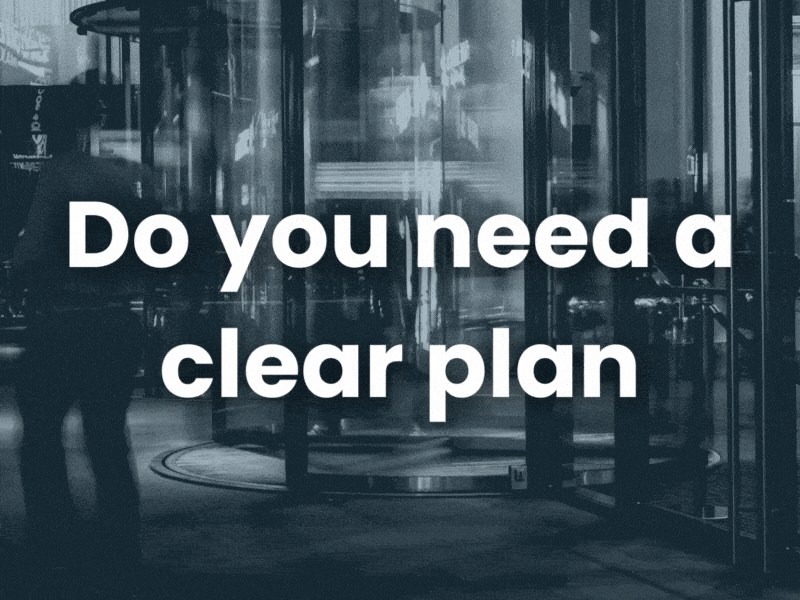You Only Get One First Impression: How Web Design Influences Bounce Rates

The first visit to a website is like to a first date—those initial seconds make a vital first impression. If the design is confusing or unprofessional, like your date showing up in grubby sweatpants, visitors will likely lose interest quickly. However, an appealing and user-friendly interface makes a positive impact from the get-go. Your website design should dress to impress visitors immediately.
A high bounce rate often signifies that a website fails to satisfy visitor needs and expectations. This has a direct negative correlation with user satisfaction and conversion rates. By optimizing key elements of design, businesses can reduce bounce rates and increase conversions. Let’s take a closer look at how web design can either hurt or help a business.
Defining Bounce Rates
Bounce rate refers to the percentage of visitors who enter a website and then leave without viewing any additional pages. For example, if 100 users visited a homepage, but only 20 went on to view other pages, the bounce rate would be 80%.
High bounce rates indicate potential issues with a site's design, content, or messaging—visitors are leaving because the website fails to capture their attention. Lowering bounce rates is critical for improving conversion rates and revenue, since visitors, of course, can't make a purchase if they don't stick around.
What's Making them Bounce?
Let’s examine some specific web design mistakes that negatively impact bounce rates:
Slow Page Load Times
With high-speed internet, user patience is limited. Research shows load times exceeding 3 seconds lead to substantially higher abandonment rates. This issue is amplified on mobile sites, where complex desktop designs can load painfully slowly.
Visitors who land on a slowly loading page typically navigate away swiftly before fully viewing the content. Optimizing page load speeds is vital for making a positive first impression and sustaining user engagement.
Confusing Navigation
Attempting to find information on a website with unclear navigation is frustrating, like wandering aimlessly through a maze. Disorienting site structures and illogical menus cause visitors to feel "lost" and promptly leave the site.
Streamlining navigation helps visitors easily access important content without aimless searching. Intuitive site navigation makes exploration more seamless and enjoyable, reducing abrupt exits.
Cluttered Page Layouts
Visually dense websites containing excessive graphics, videos, advertisements and popups overload visitors with competing elements vying for their attention. An overabundance of visual clutter overwhelms users, preventing them from focusing on the core content and messaging.
Decluttering layouts helps highlight important page elements and enhances visitor experience. Careful use of white space and strategic visual hierarchy effectively guide the viewer’s eye in a way that makes sense both to them and to your business.
Unclear Calls-To-Action
Distinct calls-to-action encourage visitors to take the actions you're after, such as signing up or making a purchase. However, CTAs that blend into the page or lack visual prominence fail to make an impact. CTAs should not only be obvious to visitors, but also have the "va va voom" factor that entices them to click.
Strategically placing CTAs in attention-grabbing areas like above the fold or in sidebars can significantly improve results. Using contrasting colors, sizes and typography helps CTAs stand out from surrounding page elements. Additionally, employing action-driven language such as “Add to Cart” or “Download Now” clearly conveys the intended action.
Lack of Mobile Optimization
With over half of web traffic originating from mobile users, bounce rates are bound to skyrocket if your website isn't responsive across devices. Attempting to navigate non-responsive desktop websites on small screens is exceedingly frustrating for visitors, causing them to jump ship immediately.
For a top-tier user experiences, websites must adapt seamlessly across devices. Employing responsive design, accelerating mobile load speeds, and testing user interactions can effectively cater to mobile visitors.
Low-Quality Imagery
Amateurish images like pixelated product photos, tiny headshots, and unoptimized graphics reflect poorly on brands, conveying lack of professional standards. And if visitors interpret your website as half-hearted, you're unlikely to gain the trust that builds loyal customers. High-resolution visual content with crisp image quality builds confidence and trust in a business.
It is crucial for companies to invest time in creating or obtaining quality images that align with their brand identity. Images should then be optimized for web use by compressing file sizes and resizing appropriately. With strong visual content, websites are destined to make stellar first impressions.
Inconsistent Design Elements
Browsing websites feels more efficient when layouts, branding, styles and navigation schemes remain consistent across pages. On the other hand, drastic variation from page to page can throw visitors off.
Upholding consistent design across the board improves usability by building a familiar pathway from one page to the next. While consistency breeds comfort and trust, inconsistency causes confusion and frustration. That's hardly the recipe for the sales you want.
Optimizing Design to Reduce Bounce Rates
Let’s recap the solutions to enhance website design and decrease high bounce rates:
- Streamline navigation using clear menus, intuitive website structure, and search functions to seamlessly guide visitors.
- Accelerate page load speeds through image compression, caching, minification, and other optimization techniques.
- Use strategically placed, visually distinct CTAs with action-driven copy to get people engaged .
- Optimize for mobile users through responsive design and usability testing.
- Declutter layouts to highlight important elements and naturally guide the user's journey.
- Showcase high-quality imagery aligned with brand identity for a first impression that wows.
- Maintain consistent designs across pages to boost familiarity and comfort.
Why Website Design Matters to Small Businesses
The key thing to remember is that website design significantly influences user satisfaction and engagement, which directly impacts conversion rates and revenue. First impressions are critical, especially online. An aesthetically pleasing and user-friendly website makes visitors more receptive to the brand, whereas confusing and poorly designed interfaces prompt visitors to leave before absorbing value propositions. In other words: better design means more sales.
For small businesses, the stakes are high. A company website is often the initial touchpoint with prospective customers. Brands cannot afford to damage these relationships before they have an opportunity to develop.
At Your WP Guy, we understand how importance design is to small businesses. We specialize in websites that flawlessly represent brands while optimizing for usability and conversions.
If you question whether your current website effectively engages visitors, we can help. Schedule a discovery call with us to discuss revamping your website design. Our team will not only refresh your site’s look and feel, but we'll do it in a way that reduces bounce rates and lifts conversions. Let us help you make a stellar first impression.
How Web Design Influences Bounce Rates Summary
- High bounce rates indicate issues with website design, content or messaging.
- First impressions form quickly online, so design greatly impacts visitor engagement.
- Optimizing navigation, page speed, CTAs, imagery and consistency reduces bounce rates.
- Decluttering layouts, ensuring mobile optimization and using quality visuals improve user experience.
- Well-designed websites make better first impressions, keeping visitors on site longer.


